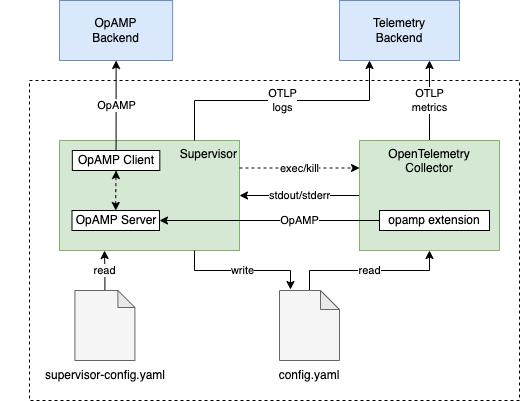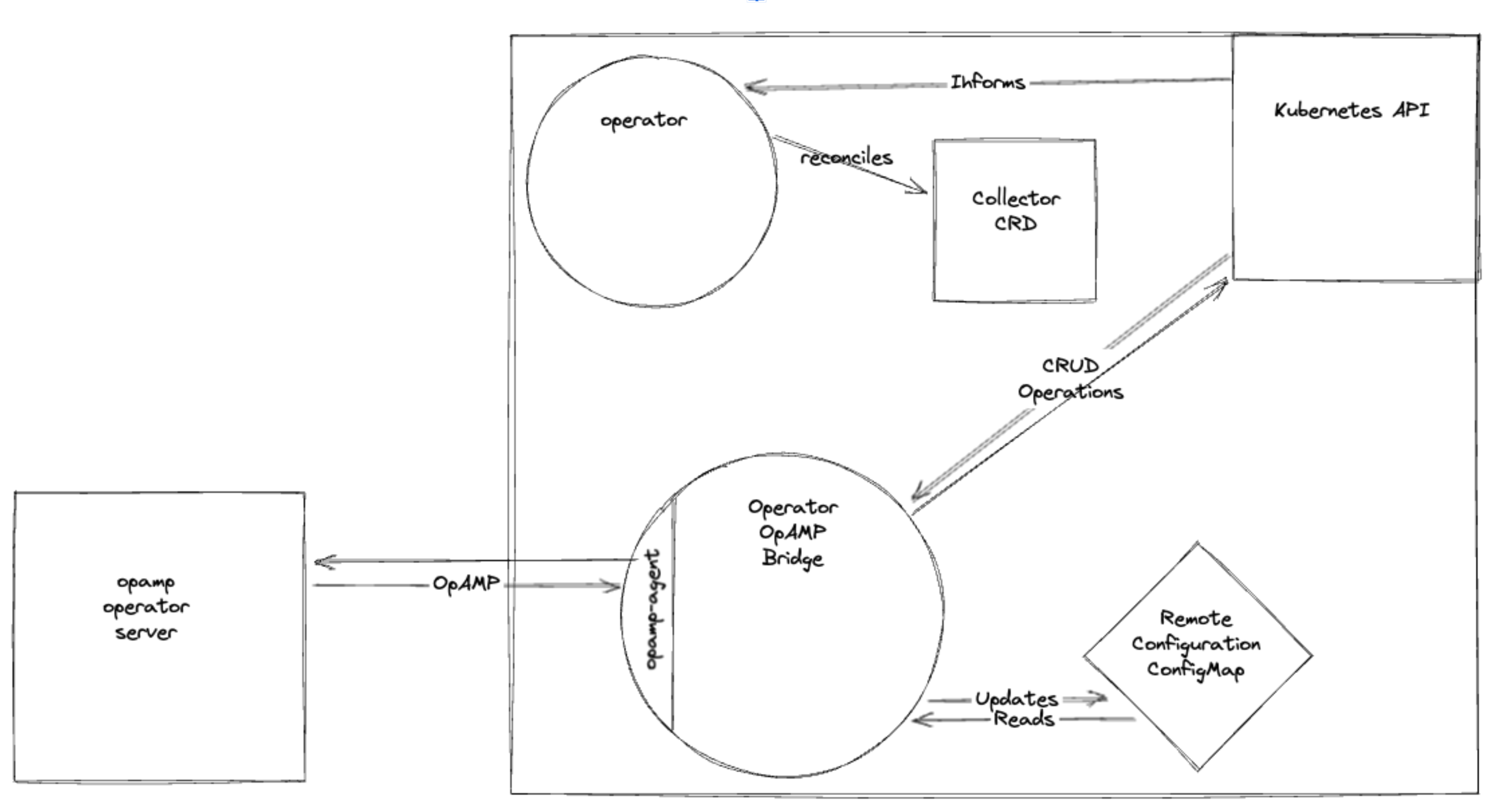Open Agent Management Protocol (OpAMP) State of the Nation 2023
Blog posts are not updated after publication. This post is more than a year old, so its content may be outdated, and some links may be invalid. Cross-verify any information before relying on it.
Open Agent Management Protocol (OpAMP) is the emerging open standard to manage a fleet of telemetry agents at scale. In 2022, Splunk donated OpAMP to the OpenTelemetry (OTel) project, with initial feedback from observIQ, based on observIQ’s custom protocol used in BindPlane. The OpAMP specification defines a network protocol for remote management of fleets of agents. These agents can really be anything, from telemetry agents such as the OpenTelemetry Collector to Fluent Bit to custom agents you might use in your environment.
In OpAMP, we distinguish between the server side, usually hosted in a control plane, and the client side, implemented in the respective agent you want to manage. For example, using OpAMP to manage a fleet of OpenTelemetry Collectors, may look something like shown in the following:
The collectors report their status to and receive configuration from an OpAMP control plane. The OpAMP protocol is vendor-agnostic and generic (not OTel specific), so an OpAMP server can remotely monitor and manage a fleet of different agents. OpAMP currently supports, amongst other things:
- Agents, such as the OpenTelemetry Collector, can report their properties, for example, type and version, or also the host operating system details to the Server (OpAMP control plane).
- The Server can push configurations to agents and ensures that said configurations are applied, for example through reloading the agent.
- You can ingest the agent’s own telemetry (logs and metrics) into an OTLP-compliant observability backend.
- Secure auto-updating capabilities for both upgrading and downgrading of the agents.
- Built-in connection credentials management, including client-side TLS certificate revocation and rotation.
Now that we have a rough idea of what OpAMP is and what it supports, let’s have a look at how it is implemented in the OpenTelemetry Collector.
In discussions with OTel end-users and collector contributors we found that they want to use OpAMP both as an collector extension, with limited functionality, as well as as an (collector-external) supervisor that implements a broader set of OpAMP capabilities.
For a deeper dive, see OpAMP for OpenTelemetry Collector document, which describes how to implement both options while minimizing code duplication.
The main idea to support both modes is to implement an extension in the collector with a minimal set of OpAMP capabilities. This collector extension can be used on its own, and can also be used to create an external Supervisor that uses said extension as a helper and implements the remaining OpAMP capabilities on top of what the extension implements:

Let us start with a closer look at the collector OpAMP extension and then we move on to the OpAMP Supervisor.
OpAMP extension
The OpenTelemetry Collector OpAMP extension will implement an OpAMP client within the collector and will be used in both the standalone and supervised models for managing a collector instance through OpAMP. The functionality for the OpAMP extension while working with the Supervisor has been defined as part of the Supervisor’s design document, where the extension will largely be tasked with providing bootstrapping information to the Supervisor and communicating the collector’s effective configuration.
OpAMP supervisor
The OpAMP Supervisor will exist as a separate binary that runs an OpenTelemetry Collector instance and implements an OpAMP client to relay configuration from an OpAMP server to the collector by merging remote and local configuration sources into a file that the collector can then use on startup. The supervised model of managing the collector will also allow for downloading additional binaries through the OpAMP protocol, allowing for downloading additional files as well as updating the collector.
In addition, if the OpAMP Server sends the Supervisor a “bad” configuration and the collector fails to start, since it is running as a separate process, the Supervisor can communicate this with the OpAMP server to notify it of the situation. On top of implementing an OpAMP client, the Supervisor will also implement an OpAMP server where it will communicate with the OpAMP extension running in the collector to receive information about the Collector. We defined the Supervisor’s functionality in a design document and based on it we contributed an initial implementation to the opentelemetry-collector-contrib repository with a backlog of issues created to guide further development.
OpAMP in Kubernetes
In OTel we have dedicated support for Kubernetes as a compute platform via the OpenTelemetry Operator for Kubernetes. In this context, we’re also working on OpAMP support in Kubernetes which will be available through a bridge component to be deployed by the OpenTelemetry Operator:

Currently, we don’t have support for deployment via Helm chart, however, if you’d like to contribute to this, you’re welcome to contribute.
The OpAMP bridge is a binary developed by the OTel SIG Kubernetes Operator and is responsible for maintaining pools of OpenTelemetry Collector resources in a Kubernetes cluster. The bridge acts as a client for an OpAMP operator server, reporting the effective configuration of the collector pools and enables the remote configuration of pools of collectors. In the future, the bridge will report richer information about the collector pools running in Kubernetes through enhanced status and improved health checks. You can also extend the bridge to support the remote configuration of Instrumentation resources. The bridge’s image is already built and released with the OpenTelemetry Operator. In addition, we’re working on a convenience Custom Resource Definition (CRD) which will enable you to easily deploy the bridge into a Kubernetes cluster.
What’s next?
The community has been working on OpAMP now for more than a year and users are excited about the opportunities it promises to deliver. If you’re around at KubeCon NA in Chicago, USA between Nov 6 and 9 2023, consider visiting us at the OpenTelemetry maintainers booth or find us at any of the many observability-related events such as the Observability day. We’re super interested to learn from you about non-OTel collectors use cases and requirements as well. For now, if you’re a vendor and implementing the OpAMP spec please provide feedback and as an end-user you may wish to try out the reference implementation of the Server, Supervisor and a simple UI by following the steps in the OpAMP entry in the OTel docs or maybe even dive deep into the Supervisor code (in Go) in the OTel collector.